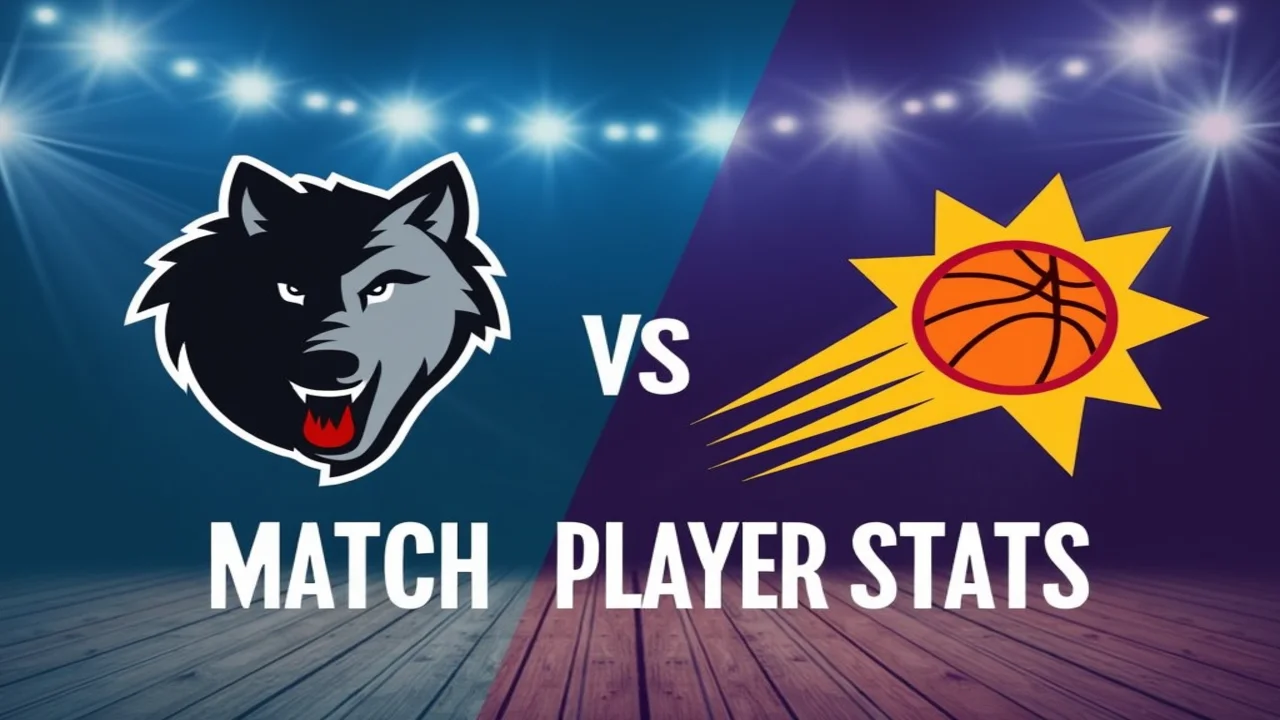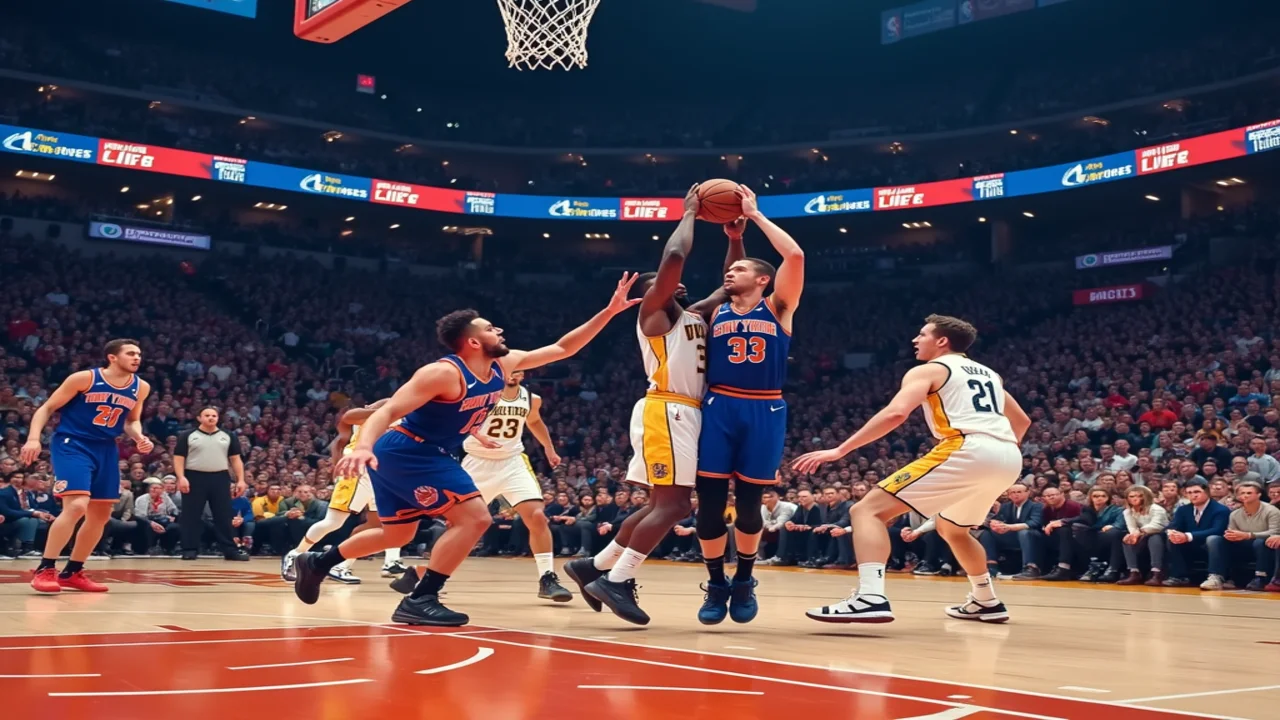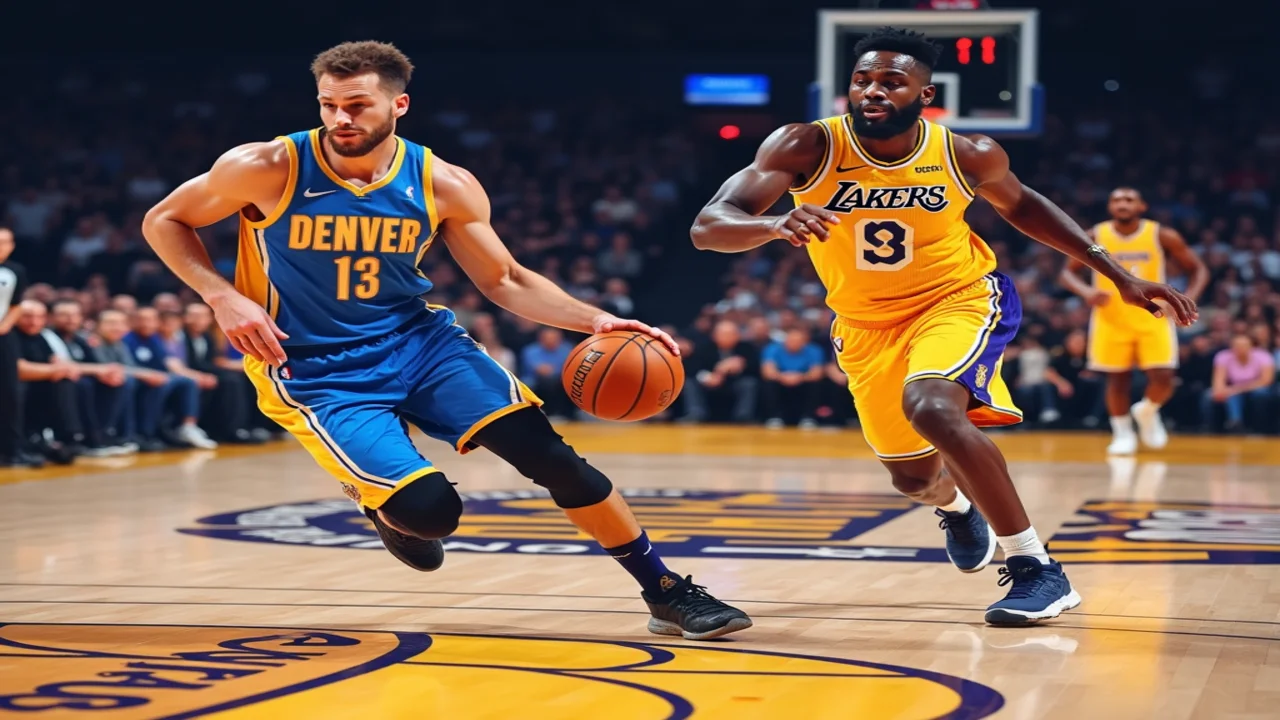Introduction
On November 17, 2024, basketball fans saw a thrilling matchup between the Phoenix Suns and the Minnesota Timberwolves. The game was close and exciting, featuring a combination of brilliant strategy and outstanding play from each player. For those eager to dive deeper into the game, the Timberwolves vs Phoenix Suns Match Player Stats provided fascinating insights into the performances that led to the Timberwolves pulling off a 120-117 victory. Fans were on the edge of their seats the whole way through this match, which was a true reflection of the teams’ incredible talent and fierce competitiveness.
Understanding the Context of Timberwolves vs Phoenix Suns
This article analyzes the Timberwolves vs. Suns game by looking at the game’s most memorable moments, statistics, and standout performances. Our goal is to shed light on what made this game a memorable part of the NBA season by analyzing the players’ roles and the key strategies used.
Key Performances from the Timberwolves
Julius Randle’s Dominance on the Court
With 35 points on 11-of-20 shooting, Julius Randle was the Timberwolves’ lynchpin. The fact that he was able to score on five out of eleven three-point attempts demonstrated his offensive versatility. Randle proved valuable as a dependable scorer in crucial moments with his buzzer-beater at halftime and clutch three-pointer at the end of the game.
The Efficient Scorer
The Timberwolves’ up-and-coming star, Anthony Edwards, contributed 24 points on 64 percent shooting. The Timberwolves remained in the game thanks to his constant threat and adeptness at navigating the Suns’ defense.
Donte DiVincenzo’s Spark off the Bench
With 15 points and 50% from beyond the arc, Donte DiVincenzo gave the Timberwolves some much-needed bench production. He was crucial to the team’s comeback because of his scoring relief and ability to stretch the floor.
Rudy Gobert: Defensive Anchor and Scorer
With 14 boards and 14 points, Rudy Gobert was unstoppable in the paint. He helped keep the Suns’ scoring chances inside the paint to a minimum on defense and kept the Timberwolves’ offense well-rounded offensively.
Standout Contributions from the Phoenix Suns
Devin Booker’s Offensive Masterclass
Averaging 44 points on 15-of-29 shooting, Devin Booker was simply unrivaled. He demonstrated leadership and offensive skill with his six rebounds and seven assists in addition to his ability to score from anywhere on the court. The Suns were ahead for the majority of the game thanks to Booker’s play, but they still came up short in the end.
Grayson Allen’s Bench Brilliance
Coming off the bench, Grayson Allen scored 18 points, demonstrating his shooting touch and knack for capitalizing on defensive mistakes. The Suns’ scoring momentum in the second and third quarters was sustained thanks in large part to his contributions.
The Playmaking Facilitator
With 13 points and 11 assists, Tyus Jones demonstrated his value as a playmaker, achieving a double-double. The Suns were able to take advantage of holes in the Timberwolves’ defense thanks to his court vision and offensive orchestration.
Game-Changing Moments and Strategies
The Timberwolves’ Resilient Comeback
In the second quarter, the Timberwolves were down 16 points, but they battled back with incredible determination. With smart defensive adjustments and help from the bench, they were able to close the gap, paving the way for an exciting final stretch.
Randle’s Halftime Buzzer-Beater
A much-needed boost to the Timberwolves’ momentum was provided by Julius Randle’s buzzer-beater at the end of the first half. This turned the tide of the game and gave the Timberwolves the confidence they needed to come back from behind.
Clutch Play in the Final Just
Randle made the game-winning three-pointer as the Timberwolves went on a 13-3 run to end the game. Their capacity to use offensive precision and defensive intensity under pressure was on display in this sequence.
Booker’s Heroics and Suns’ Shortcomings
The Suns’ offense was led by Devin Booker, but they were unable to hold on in the final minutes. Despite getting off to a good start, they lost the game due to defensive mistakes and missed opportunities.
Statistical Breakdown of the Match Team Field Goals
Crucial to the Timberwolves’ triumph were their superior field goal percentage and rebounding numbers compared to the Suns. The Suns’ offensive surge was mitigated by their ability to hold possession and take advantage of second-chance opportunities.
Key Factors That Defined the Timberwolves’ Victory
Defensive Adjustments in the Second Half
After the Suns took control in the first half, the Timberwolves’ coaching staff made important adjustments to the defense. The Suns had to depend on their secondary scorers because they double-teamed Devin Booker, which disrupted his rhythm. In limiting drives to the basket, Rudy Gobert’s interior presence was critical, and the Timberwolves’ perimeter defense got better at contesting three-point attempts.
Bench Depth and Scoring Support
The Timberwolves’ bench depth was crucial to their victory, even though their starters had good games. The team’s intensity was maintained even during rotations thanks to Donte DiVincenzo’s sharp shooting and dynamic energy, as well as the defensive contributions of other role players. Due to their depth, the Timberwolves were able to defeat the Suns, whose bench had a tough time keeping up its consistency during the second half.
Transition Opportunities and Fast Break Efficiency
The Timberwolves scored 18 points on fast breaks by taking advantage of the Suns’ turnovers. They were able to disrupt the Suns’ defensive setups by converting defensive stops into fast offensive opportunities. This gave players like Anthony Edwards the freedom to attack the basket with precision and speed.
Phoenix Suns’ Tactical Strengths and Shortcomings

Devin Booker’s Isolation Efficiency
Isolation play was where Devin Booker really shone; he had no trouble getting by defenders and making his own shots. He demonstrated his scoring versatility with six made three-pointers and a variety of mid-range jump shots. Nevertheless, during crucial periods, the Suns’ offense became predictable due to their reliance on Booker.
Lack of Defensive Consistency
The Suns’ defensive prowess, especially in the first half, was impressive, but they were unable to maintain that level of play. The Timberwolves took advantage of mismatches and poor rotations, particularly in the last seconds of the game. Minnesota was able to reclaim the lead and seal the victory because of critical mistakes in defending the three-point line.
Underwhelming Paint Presence
The Suns’ guards played well, but they had trouble scoring in the paint. The Suns’ big men couldn’t hold a candle to Rudy Gobert and the Timberwolves’ frontcourt when it came to blocking shots and grabbing rebounds. Because of this difference, the Suns had fewer opportunities to score on second chances, while the Timberwolves gained valuable extra possessions.
Critical Moments That Shaped the Game
The Timberwolves’ Momentum-Boosting Third Quarter
A turning point for the Timberwolves came in the third quarter. They used a combination of effective shooting and dogged defensive pressure to outscore the Suns by a score of 12 points during this time. The crowd and the players were energized as Anthony Edwards scored back-to-back baskets.
Grayson Allen’s Impactful Stretch
The Suns had a short scoring surge in the fourth quarter thanks to back-to-back three-pointers made by Grayson Allen. His help put a brief stop to the Timberwolves’ run, which kept the Suns in the game. Nevertheless, his influence was swiftly mitigated by the Timberwolves’ defensive adjustments.
The Final Minute Drama
A demonstration of poise and composure under duress occurred in the final seconds of the game. The Timberwolves scored the game-winning three-pointer by Julius Randle after Devin Booker missed a shot. The play was flawlessly executed. The Suns were about to tie the game when a shot that was hotly contested by both teams went wide.
Statistical Highlights and Team Comparisons
Scoring Distribution Across Quarters
Throughout the game, the scoring patterns of the Suns and the Timberwolves were completely opposite. The Timberwolves were able to get back into the game thanks to their consistent scoring in the third and fourth quarters, despite the Suns’ early dominance and 16-point lead in the second quarter. As the game came to a close, the Timberwolves’ scoring surge demonstrated how well they handle pressure.
Shooting Efficiency Comparison
The Suns’ field goal percentage was 47.8%, while the Timberwolves’ was 53.4%, which was a major contributor to their win. One of their main advantages was their shot selection and finishing skills, especially from long range.
Rebounding and Second-Chance Points
With a 45-39 advantage in rebounds, Minnesota easily outscored the Suns. The Timberwolves’ advantage was swayed by Rudy Gobert’s 14 rebounds and other crucial offensive boards from their frontcourt, which led to valuable second-chance opportunities.
Players Who Could Define Future Matchups
Anthony Edwards’ Growth as a Leader
The Timberwolves’ Anthony Edwards is becoming more of a leader. He bodes well for the team’s future because he can score goals efficiently while staying calm under pressure. Future matchups may feature Edwards, thanks to his ability to deliver in the clutch.
Devin Booker’s Continued Dominance
The Suns’ most consistent scoring threat is still Devin Booker. He showed that he can score points for his team by himself, but the Suns need to find ways to distribute the scoring load more evenly.
Donte DiVincenzo’s Role as an X-Factor
The X-factor potential of Donte DiVincenzo was on full display in his bench performance. When facing elite teams like the Suns, his defensive zeal and three-point shooting could be the difference in upcoming games.
Seasonal Consequences
Timberwolves’ Playoff Aspirations
With this win, the Timberwolves established themselves as a serious threat to make the playoffs. They are going to be a tough opponent to beat as the season goes on because of their depth at every position and their ability to perform under pressure.
Suns’ Need for Tactical Adjustments
The game highlighted some weaknesses for the Suns, namely their lack of consistency on defense and their lack of presence in the paint. To stay competitive in a Western Conference that is loaded, they must address these weaknesses.
Potential Rivalry Brewing
The Timberwolves and Suns seem to be developing a rivalry based on how closely this matchup is contested. Both teams are incredibly talented and fiercely competitive, so any future games between them should be exciting.
FAQs
1. Who were the standout players in the Timberwolves vs Suns game?
Julius Randle and Devin Booker stole the spotlight with their respective performances. Randle’s clutch shooting and Booker’s offensive dominance were key highlights.
2. How did the Timberwolves secure their victory over the Suns?
The Timberwolves relied on a combination of strategic adjustments, bench contributions, and clutch plays in the final minutes to edge past the Suns.
3. What role did Rudy Gobert play in the Timberwolves’ win?
Rudy Gobert’s defensive dominance in the paint and his ability to grab crucial rebounds were instrumental in limiting the Suns’ interior scoring and creating second-chance opportunities for the Timberwolves.
4. How did the Suns’ bench contribute to the game?
The Suns’ bench, led by Grayson Allen, added scoring depth and kept the team competitive during crucial stretches, though it wasn’t enough to secure a victory.
5. What were the key statistical highlights of the game?
The Timberwolves’ superior field goal percentage and rebounding advantage were decisive factors, enabling them to maintain possession and capitalize on scoring opportunities.
Also Read: NBA Byte: Live NBA on NBA Bites And Alternative
Conclusion
The match between the Minnesota Timberwolves and the Phoenix Suns on November 17, 2024, was an exciting demonstration of basketball brilliance. The match was driven by the competitive spirit of both teams, as both Julius Randle and Devin Booker showcased their strengths. The hard-fought 120-117 victory was finally sealed by the Timberwolves’ resiliency, clutch-moment ability, efficient shooting, and defensive adjustments. For those interested in diving deeper into the details, Timberwolves vs Phoenix Suns Match Player Stats offer an insightful look at individual performances that shaped the outcome. Fans are already looking forward to what is sure to be another exciting matchup between these two teams after this game, which showcased the changing dynamics between them.

Stephen Norman is a skilled and accomplished writer known for his versatility across numerous niches. He consistently delivers insightful and engaging content in various fields. Stephen’s extensive experience and profound expertise make him a highly sought-after author in the digital writing sphere.











